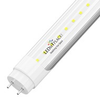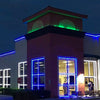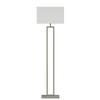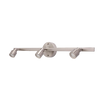High bay LED lights are a popular lighting solution for spaces with high ceilings, such as warehouses, factories, gyms, and retail stores. Choosing the right high bay LED lights can significantly impact energy efficiency, lighting quality, and overall productivity. In this guide, we'll explore how to select the perfect high bay LED lights for your needs.
Understanding the Basics of High Bay LED Lights
High bay LED lights are designed to illuminate large areas with high ceilings. Unlike traditional lighting fixtures, LED lights offer numerous advantages, including energy efficiency, longer lifespan, and better light quality.
Importance of Choosing the Right High Bay LED Lights
Selecting the appropriate high bay LED lights is crucial for achieving optimal lighting conditions, improving visibility, and enhancing safety in industrial and commercial environments.
Factors to Consider When Choosing High Bay LED Lights
1. Lighting Needs and Space Requirements
Consider the specific lighting requirements of your space, including brightness levels and light distribution. Evaluate the size and layout of the area to determine the number and placement of fixtures needed.
2. Energy Efficiency and Cost Savings
Look for high bay LED lights with high efficacy ratings and Energy Star certification to maximize energy savings. Calculate the potential cost savings over the lifespan of the fixtures to justify the initial investment.
3. Light Quality and Color Rendering Index (CRI)
Opt for high bay LED lights with a high CRI to accurately render colors and improve visibility. Choose the appropriate color temperature (e.g., warm white, neutral white, or daylight) based on the application and preference.
4. Durability and Lifespan
Select high bay LED lights with durable construction and IP ratings to withstand harsh environmental conditions and minimize maintenance requirements. Consider the estimated lifespan of the fixtures to avoid frequent replacements.
5. Installation and Maintenance Requirements
Evaluate the ease of installation and maintenance for the selected high bay LED lights. Choose fixtures with simple mounting options and accessible components for hassle-free upkeep.
Types of High Bay LED Lights
There are several types of high bay LED lights available, each designed for specific applications and preferences:
1. Traditional High Bay LED Lights
These fixtures feature a classic design with a large reflector for directing light downward. They are suitable for general lighting in industrial settings.
2. Linear High Bay LED Lights
Linear high bay fixtures have a sleek, low-profile design ideal for applications requiring uniform lighting distribution, such as warehouses and retail spaces.
3. UFO High Bay LED Lights
UFO high bay lights feature a compact, circular shape and provide powerful illumination with minimal glare. They are commonly used in gymnasiums and sports arenas.
4. Low Profile High Bay LED Lights
These fixtures have a slim profile and are suitable for low-ceiling applications where space is limited. They offer efficient lighting without compromising on performance.
Understanding Light Distribution Patterns
1. Direct vs. Indirect Lighting
Consider whether direct or indirect lighting is more suitable for your space. Direct lighting provides focused illumination, while indirect lighting creates a softer, diffused glow.
2. Beam Angle and Distribution Uniformity
Choose high bay LED lights with adjustable beam angles to customize the light distribution pattern. Ensure uniform lighting coverage throughout the space to minimize shadows and glare.
Assessing Environmental Conditions
1. Temperature and Humidity Levels
Take into account the ambient temperature and humidity levels of the environment where the high bay LED lights will be installed. Choose fixtures with appropriate thermal management systems to prevent overheating.
2. Hazardous Location Ratings
If your facility is subject to hazardous conditions, such as flammable gases or dust particles, select high bay LED lights with suitable hazardous location ratings to ensure safety and compliance with regulations.
Additional Features and Options
1. Dimming and Lighting Controls
Consider fixtures with dimming capabilities and lighting controls to adjust brightness levels and conserve energy based on occupancy and daylight availability.
2. Motion Sensors and Daylight Harvesting
Install motion sensors and daylight harvesting systems to automatically adjust light output and optimize energy usage based on occupancy and natural light levels.
3. Emergency Backup Systems
Incorporate emergency backup systems to ensure uninterrupted lighting during power outages or emergencies, enhancing safety and security in your facility.

Budget Considerations
1. Initial Investment vs. Long-Term Savings
Evaluate the upfront cost of high bay LED lights against the potential long-term savings in energy and maintenance expenses. Consider factors such as rebates, incentives, and financing options to minimize upfront costs.
2. Return on Investment (ROI) Calculation
Calculate the ROI of upgrading to high bay LED lights by comparing the total cost of ownership over the expected lifespan of the fixtures. Factor in energy savings, maintenance costs, and productivity improvements to determine the payback period.
Installation and Maintenance Tips
1. Proper Mounting Height and Spacing
Follow manufacturer guidelines for mounting height and spacing to achieve optimal lighting performance and coverage. Avoid overcrowding or spacing fixtures too far apart to maintain uniform illumination.
2. Regular Cleaning and Inspection
Schedule regular cleaning and inspection of high bay LED lights to remove dust, dirt, and debris that can accumulate on the fixtures and reduce light output. Check for signs of wear or damage and replace any defective components promptly.
Conclusion
Choosing the right high bay LED lights requires careful consideration of various factors, including lighting needs, energy efficiency, durability, and budget constraints. By understanding these key considerations and exploring different options available, you can select high bay LED lights that meet your specific requirements



























































































